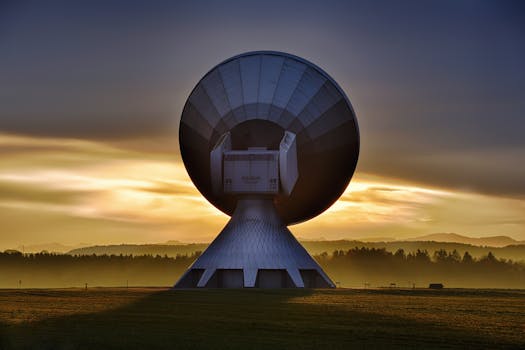
Satellite Telecommunications Technology has been a rapidly evolving field in recent years, and 2023 has been no exception. The year has seen significant advancements in satellite technology, with several major milestones achieved. Satellite Telecommunications Technology has been at the forefront of these developments, with companies and organizations around the world investing heavily in the field.
One of the major milestones achieved in 2023 has been the launch of new satellite constellations. These constellations, which are groups of satellites working together to provide global coverage, have been deployed by several companies, including SpaceX, Amazon, and OneWeb. These constellations have the potential to provide high-speed, low-latency internet connectivity to people around the world, and are expected to play a major role in the development of the global telecommunications infrastructure.
Another significant development in 2023 has been the improvement in satellite technology. Advances in materials and manufacturing have led to the production of smaller, more efficient satellites that are capable of providing higher levels of performance. This has enabled the development of new satellite-based services, such as satellite-based broadband and satellite-based navigation. The improvement in satellite technology has also led to a reduction in the cost of satellite launches, making it more accessible to companies and organizations to launch their own satellites.
Advances in Satellite-Based Services
The year 2023 has also seen significant advances in satellite-based services. Satellite-based broadband, which provides high-speed internet connectivity to people in remote and underserved areas, has become increasingly popular. Companies such as Hughes Network Systems and Viasat have launched new satellite-based broadband services, which offer faster speeds and lower latency than traditional satellite-based internet services. Satellite-based navigation, which provides location information and timing signals, has also become more widespread. The development of new satellite-based navigation systems, such as the European Union’s Galileo system, has improved the accuracy and reliability of navigation services.
The use of satellites for Earth observation has also become more prevalent in 2023. Satellites such as the NASA’s Landsat 9 and the European Space Agency’s Copernicus Sentinel-2 have been launched, which provide high-resolution images of the Earth’s surface. These images are used for a variety of applications, including environmental monitoring, crop monitoring, and disaster response. The development of new satellite-based Earth observation services has also enabled the creation of new industries, such as satellite-based agriculture and satellite-based forestry.
Challenges and Future Directions
Despite the significant advancements in satellite telecommunications technology in 2023, there are still several challenges that need to be addressed. One of the major challenges is the issue of space debris, which poses a significant threat to the safety of satellites and other space-based assets. The development of new technologies and strategies for mitigating space debris is essential to ensure the long-term sustainability of satellite-based services. Another challenge is the need for greater international cooperation and regulation, to ensure that the benefits of satellite telecommunications technology are shared equitably among all nations and peoples.
Looking to the future, it is clear that satellite telecommunications technology will continue to play a major role in the development of the global telecommunications infrastructure. The launch of new satellite constellations and the improvement in satellite technology will enable the provision of higher levels of performance and capacity, and will pave the way for the development of new satellite-based services. The use of satellites for Earth observation and navigation will also become more widespread, and will enable the creation of new industries and applications.
In conclusion, 2023 has been a significant year for satellite telecommunications technology, with several major milestones achieved. The launch of new satellite constellations, the improvement in satellite technology, and the advances in satellite-based services have all contributed to the growth and development of the field. As we look to the future, it is clear that satellite telecommunications technology will continue to play a major role in the development of the global telecommunications infrastructure, and will enable the creation of new industries and applications.



